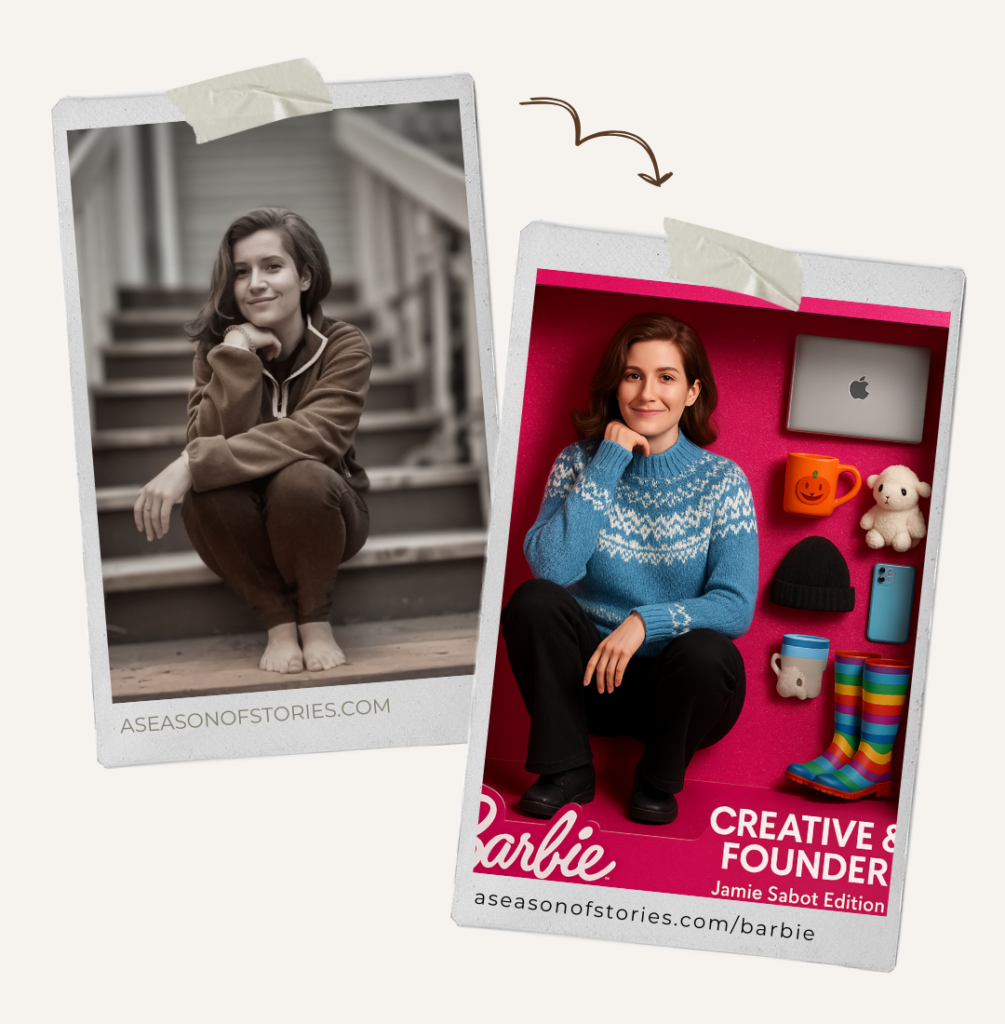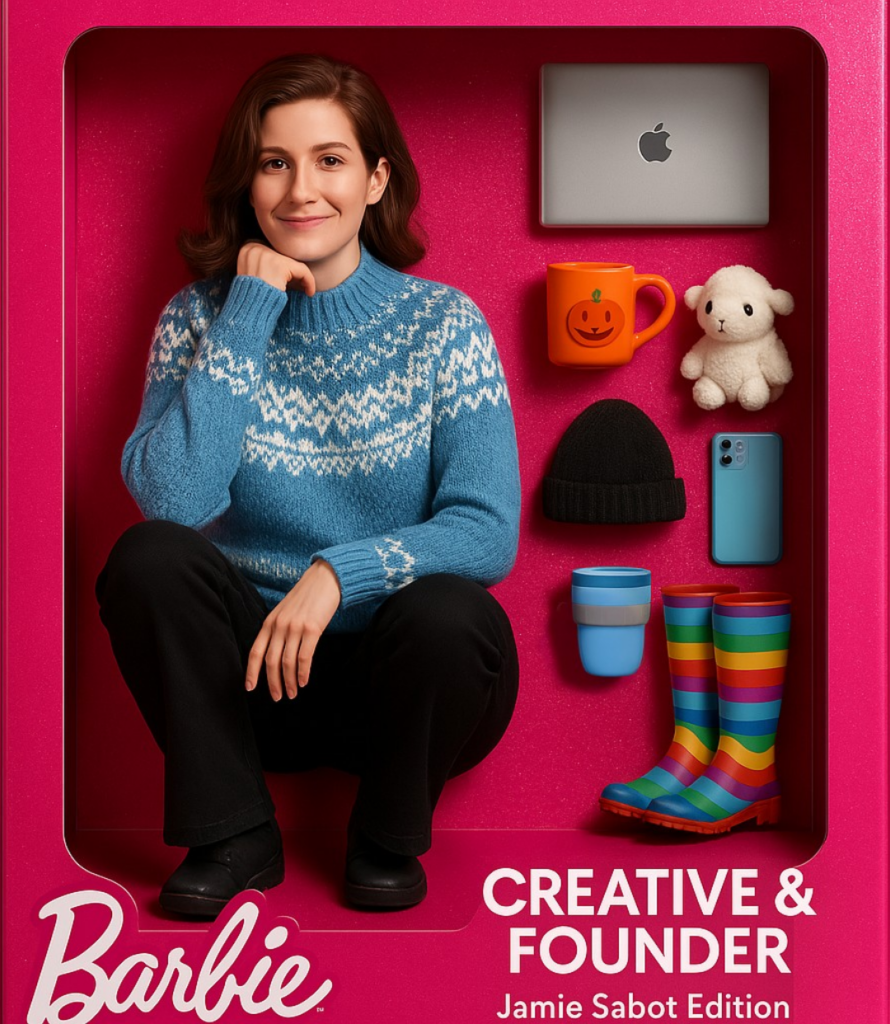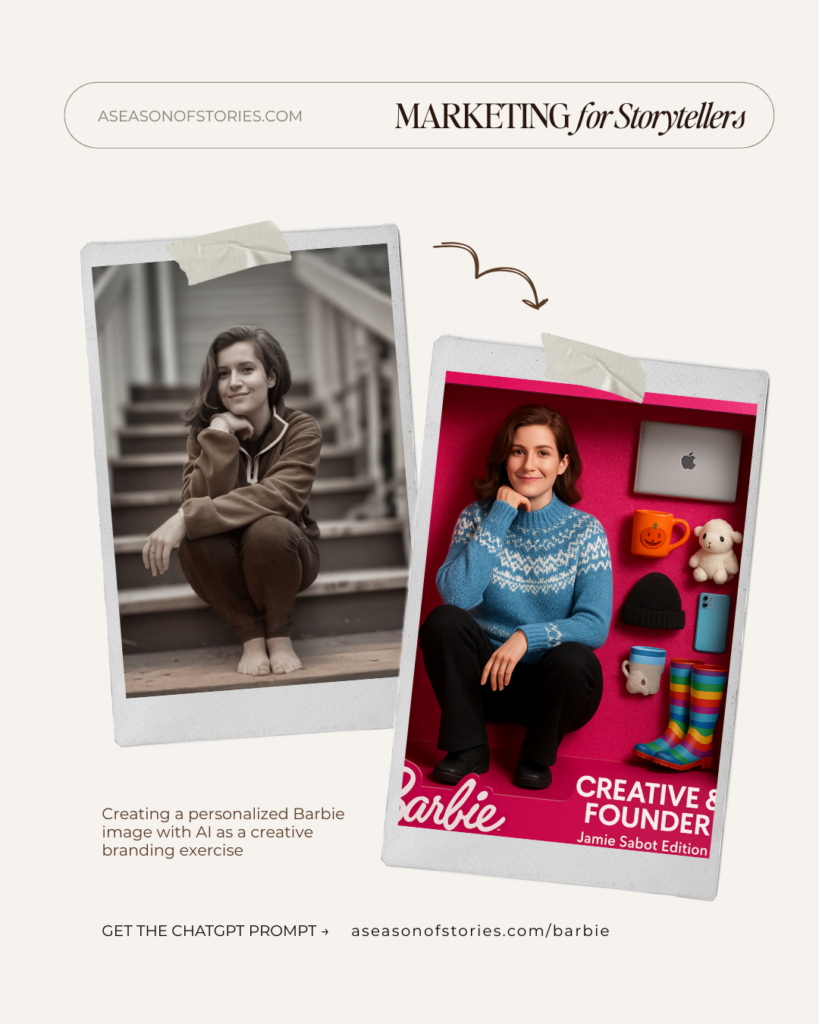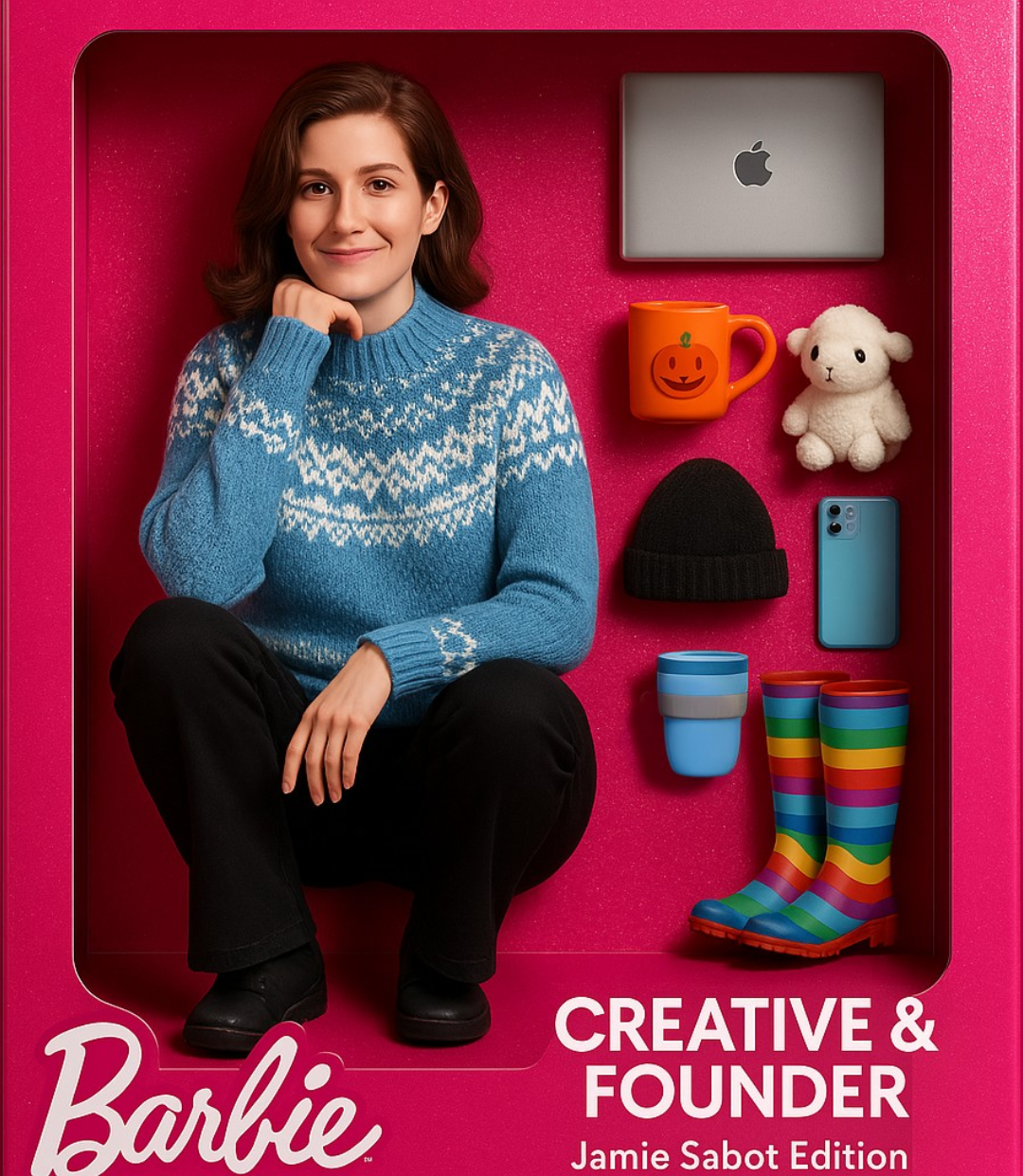
What does your action figure say about you, and what is the psychology behind this fun branding exercise? Let’s find out!
You, as a boxed action figure.
Your signature outfit.
Your go-to tools and accessories.
Your title in bold lettering.
It sounds playful—and it is. However, while this activity is meant to be a playful way to reflect on your identity, values, and how you show up in your work, it’s also worth noting that there are some tensions underneath it that are useful to keep in mind.
For the sake of this post, I’m going to discuss some of those tensions briefly rather than veer off into an epic post about what this AI craze can say about the way our culture turns identity into aesthetic, value into visibility, and selfhood into something that needs to be packaged and sold. I’ll provide the prompt and talk about some of the psychology, mainly externalized self-expression.
However, if you want to dive in and make your version and are here for the ChatGPT prompt I used to create this version for myself, directions for personalizing the prompt for you, and what to do if something gets generated that’s a bit off, grab the guide right here. ↓
A Note About the Barbie Exercise
This exercise is creative. It’s expressive. It’s useful.
But it also exists within a much larger cultural context, and it’s worth naming a few of the tensions that accompany that.
When we imagine ourselves as a boxed Barbie or action figure, we’re not just playing with identity; we’re engaging with symbols that carry decades of meaning around consumerism, aesthetics, and self-image. It’s worth pausing to consider what that means, especially when using the exercise as a branding or business tool.
Commodification of Self
Modelling yourself after a product — even metaphorically — brings up the question of how much of our identities have already been shaped to be marketable. In branding spaces, especially online, it’s easy to start filtering personality through the lens of “what sells” or “what photographs well.” There’s a difference between self-expression and self-commodification, but the line can get blurry — fast.
Consumerism Disguised as Empowerment
Barbie has long been tied to consumer culture. Entire aesthetics — like “Barbiecore” — encourage buying into a lifestyle through visuals, accessories, and curated identity. The rise of hyper-stylized personal brands follows similar patterns. It’s easy to confuse ownership over our image with empowerment when, sometimes, we’re just participating in a slightly shinier version of the same systems.
Impact on Self-Perception
Decades of research have examined Barbie’s influence on self-image and beauty standards. While this exercise isn’t directly about body image, it still plays with the idea of distilling identity into a curated, packaged figure- something to be seen, styled, and displayed. That raises real questions about how we internalize visibility, legibility, and perceived value, especially for those building personal brands in public.
This doesn’t mean the exercise isn’t worth doing. But it’s worth knowing what you’re stepping into and being intentional about how you choose to proceed.
Why Imagine Yourself as an Action Figure?
At first glance, it might feel silly.
But as soon as you start choosing an outfit, selecting the “props” that live in your box, and coming up with your doll’s title… something happens.
You shift from thinking about how you should show up to tapping into how you actually feel and function. This exercise is creative visualization in action — a soft, indirect way to access personal clarity.
And it works, in part, because of something called externalized self-expression.
The Psychology Behind This
Here’s what the research tells us:
1. Creative self-expression is essential for identity formation.
According to psychological studies on creativity and well-being, engaging in creative self-expression helps us better understand ourselves, not just how we think but also what matters to us.
It’s how we say, “This is me.”
This is especially helpful for folks who process internally or don’t always have the language for what they feel.
When I chose a pumpkin mug and a pair of rainbow rubber boots to sit next to my action figure, that was as a form of self-definition, just as much as writing a brand bio.

2. Symbolic representation helps bypass mental blocks.
Symbols are powerful. They allow us to communicate layered meaning quickly.
When we work with objects, outfits, and colours, we work with symbols that hold emotional weight.
This exercise works even when you don’t have a “perfect” brand elevator pitch. You don’t need one when an image like this can convey a lot about you (and spur on engagement, too).
My self-expression symbols included a cozy sweater, a stance opposite the “power stance” seen in so many “boss lady”-style photo shoots, and a sheep to give a nod to the charity I founded with my spouse.
3. It’s easier to reflect on ourselves through metaphor.
Research in narrative psychology shows that metaphor-based self-reflection can reduce resistance, increase self-compassion, and help people name truths they didn’t know they were ready to say.
In plain terms, this exercise lets you look at yourself by creeping in sideways, rather than marching in head-on, which can feel easier to access and a lot less daunting.
What Makes This Useful for Your Brand?
1. It shows you what you value
…or at least what’s relevant to your life at the moment.
🧵What do you put in the box? What do you leave out? What has to be there? This is fascinating in and of itself!
2. It helps you anchor your message.
🧭 The “title” you choose for your figure might reveal what you’re here to do. “Creative & Founder” or “Cozy Strategist” or “The Gentle Disruptor” — all say something different, and all could have been put on the outside of my action figure box. All of those feel true for me, and ultimately, I picked the THIS AND THIS style of title because my life is very much split between those two roles right now.
3. It bridges identity and audience.
🧩 If you’re stuck on how to position your offers, this can help. When you know what your doll looks like, you also start to see who she’s for. Your audience becomes clearer because your story is clearer.
What If You Get Stuck?
if you get stuck trying to make your action figure because you end up trapped in decision paralysis, this part is common and completely normal. Outfit decisions, accessory choices, even picking a title — all of these are deeply personal. And if you haven’t spent much time reflecting on how you want to be seen, you can end up with a serious case of meh* on your hands.
* Meh for me is anything from “I just can’t even” to writer’s block to one really long rabbit hole of research.
Here’s what I suggest:
- Reflect with a peer: ask, “If I were a Barbie-style action figure, what do you think I would be wearing or holding?”
- Look through photos of yourself — when did you feel most like you?
- Use sensory clues: what textures, tools, or comforts are always around when you’re feeling your best?
Where to Go From Here
You may have already figured out that this Barbie exercise isn’t just a creative detour. It’s actually one of the many ways to start exploring who you are really and how you express yourself (or how you might want to in the future). That can lead to clearer storytelling, more aligned action, and a better understanding of ourselves.
That’s why I put together a step-by-step guide to help you create your version of this exercise. If you’re already pretty clear on your personal style, you could have your own image created in under 5 minutes (that includes the time to click the link below, open the guide, snag the prompt, and head over to ChatGPT).
If you’re ready to get creating, grab your guide.
Save to Pinterest for later:

